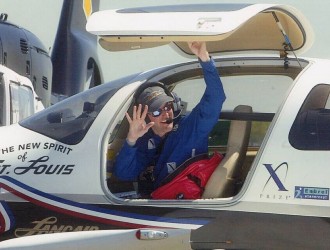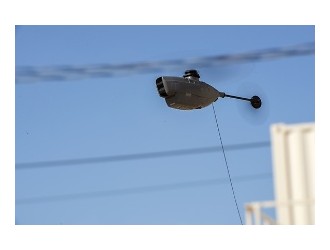
The U.S. Navy said in May that Northrop Grumman's MQ-8B Fire Scout "made history." Two demonstrations by the "Wildcards" of Helicopter Sea Combat Squadron 23 showed that the drone could provide real-time targeting information to a manned helicopter and that its controls could be exchanged between two operating bases. Northrop Grumman explained Tuesday what it took to prepare for those history-making exercises.
Demonstration rehearsal and training simulation, Northrop Grumman said, took place at the company’s Autonomous Design Center of Excellence in San Diego, California. The Fire Scout simulators located there are usually used for proficiency training for pilots and payload operators, Northrop Grumman said. But they can also be used to rehearse and validate mission plans.
“One of the primary benefits of autonomous systems is that you do not have to use precious flight hours to train, rehearse or develop new tactics, techniques and procedures,” said Melissa Packwood, program manager of Fire Scout for Northrop Grumman Aerospace Systems.
To demonstrate what the Navy called a “control station handoff,” the helicopter drone was launched using a mobile mission control station in Naval Auxiliary Landing Field San Clemente Island, Northrop Grumman said. The operators then exchanged controls in flight to operators based at Naval base Ventura County, Point Mugu. Both are located in California. Fire Scout’s controls were then handed back over to San Clemente upon return. The Navy said this was the “first ever long-range transit of the Fire Scout by an operational squadron.”
The demonstration culminated with Fire Scout acting as the laser-designating platform for a Hellfire missile, fired from a Sikorsky MH-60S, the Navy said. This exercise took place with the USS America, an amphibious assault ship, and its Amphibious Ready Group/Marine Expedition Unit, according to Northrop Grumman. Fire Scout was equipped with radar and fed information to the manned helicopter as it engaged with a moving surface contact.
Northrop Grumman Director of Business Development, Global Strategy and Mission Solutions Flory B. Ellis told R&WI in May that although Fire Scout can engage in manned/unmanned teaming, it really doesn’t need to.
“[Fire Scout] is versatile enough to be something that can augment the capability of a manned helicopter. But it also can operate as an independent unmanned system,” Ellis said. “What's really fascinating about how the Navy developed this is when you deploy with an MH-60, you deploy with 24 people. When you deploy with an MH-60 and a Fire Scout, I don't care if it's Bravo or Charlie, and an MH-60, you deploy with 24 people. Concept of operations did not add a single person. In a place like a ship, that's important. Depending upon your flight-hour profile, you can operate a Fire Scout with 11 people. It really was built to be something that is as versatile as it can possibly be.
“So there is manned/unmanned teaming concept of operation, particularly humanitarian assistance, that Fire Scout is never going to do,” she added. “But there are also missions sets, amphibious assault missions and others, wher all you really need is a Fire Scout.”
According to the Navy, the “Wildcards” of Helicopter Sea Combat Squadron 23 are the first to deploy an MH-60S and MQ-8B composite detachment aboard an Independence-class littoral combat ship.





